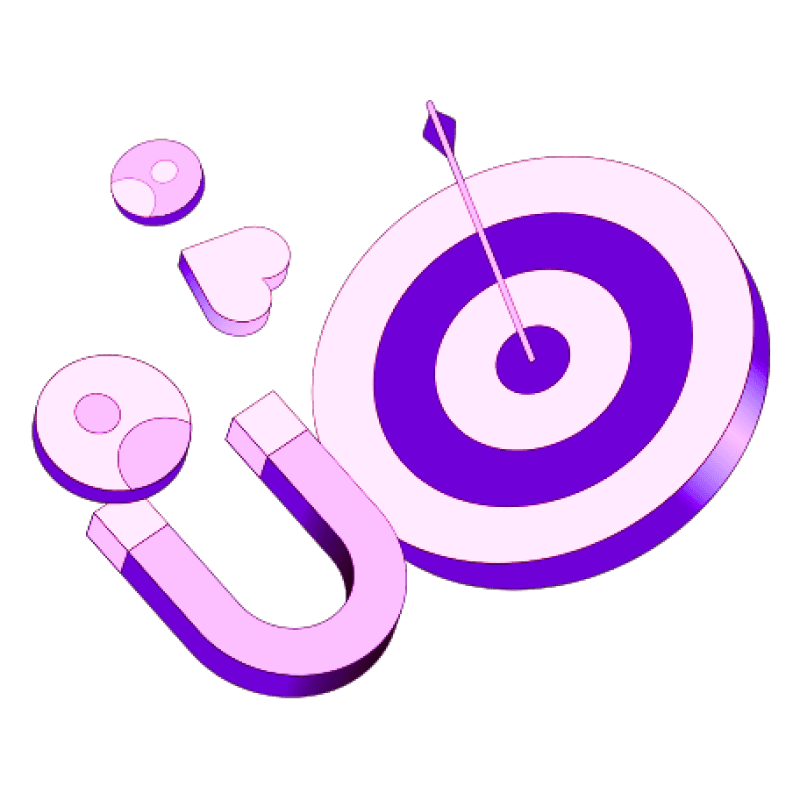Blogs
Articles

What is a Sales Pitch? A Simple Guide That Actually Works in 2025
A sales pitch should fit within a single elevator ride. That's right - a sales pitch comes down to a short but powerful presentation you can deliver in under two minutes.
A solid sales pitch gets your prospect excited about the solution you bring to the table and motivates them to move forward with you. The perfect pitch comes from understanding its core elements and structure.
We'll break down what makes a good sales pitch in this piece. You'll learn how to structure it effectively and see proven examples that will help you create your own converting pitch for 2025 and beyond.
What is a sales pitch?
A sales pitch is a compelling message that aims to persuade potential customers to buy a product or service. Today's sales pitches are brief communications that highlight your product's value and benefits. These pitches should take no more than one to two minutes to deliver.
A sales pitch has several key goals:
It introduces you, your company, and what you offer
It shows the unique value of your product or service
It shows how your solution fixes customer problems
It starts conversations that could lead to sales
Many people think sales pitches only happen in formal presentations with slideshows. This isn't true. Sales pitches come in many forms:
Scripts for cold calls
Carefully written emails to potential clients
Quick talks ready for networking events
Messages to prospects on social media
Face-to-face presentations to decision-makers
What makes a good sales pitch?
Sales pitches need more than just enthusiasm to be compelling. Research shows 40% of people respond better to visual information than plain text. The presentation style is a vital part along with the content.
The best sales pitches never sound like someone's trying to sell something. They position you as a consultant who understands problems and provides solutions. The most effective pitches focus on solving customer pain points rather than listing product features.
Your pitch should pack power into few words. Great presentations explain complex ideas with clarity and skip unnecessary jargon. This makes the message available and compelling.
Every winning sales pitch contains these key elements:
A strong hook that immediately captures attention
Clear identification of the prospect's problem
Your unique solution and value proposition
Individual-specific benefits matched to their situation
Proof points and credibility builders
A definitive call-to-action
How long should a sales pitch be?
Your sales pitch length should match your context and delivery method. Research shows that attention spans drop after certain points, making time management vital.
The "18-minute rule" has become standard practice for presentations and formal pitches. TED Talks limits all speakers to this timeframe - whatever their status - because 18 minutes keeps people focused, works well online, and carries enough weight. But it also gives speakers enough time to deliver meaningful content". Even top presenters find it hard to keep audiences engaged beyond this point.
Research shows attention spans start dropping after just 10 minutes. You can reset audience attention by adding demonstrations or interactive elements right at this mark.
Each pitch format needs its own timing strategy:
Elevator pitches: 30 seconds to 2 minutes—just right for an elevator ride
In-person presentations: 10-20 minutes, with demo time included
Phone/virtual pitches: 5-10 minutes (watch out for "Zoom brain" fatigue)
Email pitches: Stay under 200 words to keep readers engaged
Cold calls: A few minutes of good conversation works best
Investors and business prospects want brief, focused pitches. One expert suggests: "Have a 1-minute, 2-minute, 3-minute, 5-minute, 10-minute, 15-minute, and 30-minute version ready". You can ask investors how much time they have and deliver the right version.
Core Components of a Sales Pitch
A good sales pitch needs a strategic framework that gets prospects involved and motivates them to act. You can turn your pitch from forgettable to compelling by mastering these six core components.
1. The hook
Your pitch's opening moments matter a lot. A good hook grabs attention right away with thought-provoking questions, surprising statistics, or relevant observations. Successful hooks often use phrases like "Have you ever wondered..." or "Did you know..." and follow up with something that sparks curiosity about your prospect's industry challenges. A powerful hook shows you've done your homework about their business and sets up a deeper conversation.
2. The problem
After you get their attention, talk about the specific challenges your prospect faces. This part connects with their pain points and shows you get their situation. We focused on becoming a trusted advisor instead of just another salesperson. When you speak directly to their struggles, you build an emotional connection that makes your pitch more meaningful.
3. The solution
You should bring up the idea of a solution after acknowledging the problem, but don't jump straight to your product. It works well to ask prospects to "imagine" how their situation could get better. This builds excitement before you show how your offering fixes their specific pain points.
4. Personalized benefits
Your prospects want to know what your solution will do for them. Results matter more than features, so tailor your message to their specific situation. In fact, customized conversations work better because you're talking to prospects like real people instead of just potential sales.
5. Proof and credibility
Decision makers don't buy promises—they buy proof. You build trust when you share testimonials, case studies, or relevant data that verify your claims. Your personal credibility is vital too; 40% of Americans say bad grammar bothers them enough to hurt your professional image. Good preparation shows you pay attention to details.
6. Clear next steps
Your pitch should end with a specific call-to-action. Without doubt, this final piece determines if your pitch gets more and thus encourages more momentum or just fades away. Give clear, specific next steps instead of vague suggestions to make continuing the conversation easy. About 80% of sales need five or more follow-ups, which makes this part key to long-term success.
What are the 5 steps in a sales pitch?
Sales professionals who succeed follow a proven five-step process that turns prospects into customers. Let's get into this step-by-step approach that turns good intentions into real sales.
Start with customer research
Customer research lays the groundwork before creating any sales pitch. Top professionals spend much time learning about their audience's pain points and requirements. Great salespeople put a lot of effort into studying their prospect's management team, performance history, and specific challenges before they make their pitch.
Build multiple pitch concepts
Your research should lead to several pitch variations instead of just one approach. The experts say you should prepare two to three strong ideas—the "one-two punch" works really well. Two outstanding ideas usually work better than spreading your message thin with too many options.
Cooperate and refine ideas
Your team can help strengthen your pitch. Brainstorming sessions with sales colleagues give you valuable feedback. The customer service team also gave an explanation about features that appeal to existing clients. This shared approach helps shape your story based on what you know about the prospect.
Write and test your best pitch
Practice makes your pitch sound natural. You should rehearse well before meeting prospects—never read a presentation for the first time in front of potential clients. Several team members can deliver different sections to keep prospects engaged during longer presentations.
Use questions to guide the pitch
Questions should shape your pitch rather than turning it into a speech. Studies show that top performers ask between 11-14 questions during sales conversations. The best representatives weave questions naturally throughout the discussion, unlike lower performers who stack them at the start. Open-ended questions show real interest in customer needs and uncover valuable insights that competitors might miss.
Best Sales Pitch Examples and Formats
Sales professionals can learn a lot from analyzing ground examples of what makes a pitch work. Here are three common formats that top sellers use to connect with prospects.
Cold calling pitch example
Cold calling delivers great results, with phone pitches leading as the most successful selling channel. Billionaire Mark Cuban showed this perfectly when he rejuvenated the Dallas Mavericks' ticket sales. He called former season ticket holders directly. His strategy focused on emotional value instead of team performance. He reminded prospects about their memorable moments at games and pointed out that at $8 per ticket, they got better value than a McDonald's meal. The results reshaped the scene - a team bought for $280 million grew to $3.3 billion in value.
A winning cold call pitch follows this structure:
Quick intro to tell them who you are
Value proposition that tackles their challenges
Questions that start a conversation
Clear path forward to continue the discussion
Email pitch example
Prospects can review email pitches whenever they want. The data shows C-level executives respond to cold B2B emails 23% more often than other employees. The best email pitches build trust quickly, show clear benefits, and smartly include social proof.
Content marketing consultant Ryan Robinson landed a $10,000 monthly client by first giving value. He shared the prospect's content before making his pitch. The sweet spot for email pitches is 20 lines or less - these get the best click-through rates.
Social media pitch example
Social selling on platforms like LinkedIn lets you customize outreach based on public info. Top performers look at prospects' social profiles and spend 10-20 minutes learning about them before reaching out. This homework helps you start with something in common - maybe a shared contact or interest. You build rapport first, then present your solution.
Social media pitches need authenticity more than formality. The pitches that work best mention something from the prospect's recent posts and link it naturally to your solution.
What is a sales pitch deck?
A sales pitch deck is the visual foundation of your selling strategy. It differs from a verbal sales pitch. The deck is a focused presentation that shows your product's value, features, benefits, and proof points to potential customers.
The deck uses slides with powerful visuals and messaging to show buyer challenges. It demonstrates how your product solves these problems. While you use a sales pitch to talk with customers, the deck helps you present a complete story and expand on use cases, features, and customer stories.
Modern pitch decks blend data, storytelling, and emotional connection to build a narrative that moves buyers through the sales cycle. Research proves the human brain processes images in just 13 milliseconds. This makes visual pitch decks highly effective at creating lasting impressions.
For teams looking to streamline this process, an AI PowerPoint generator can quickly create professional, visually engaging slides that align with your messaging and save valuable preparation time
A powerful sales pitch deck needs:
A strong cover image that immediately grabs attention
Data visualizations like charts and graphs to support your story
Customer testimonials and case studies as social proof
Customized content tailored to the prospect's specific situation
Clear next steps or call-to-action
Conclusion
Becoming skilled at sales pitches will determine your success in today's competitive business world. This piece shows how effective pitches grab attention quickly and build real connections with prospects.
Top sales professionals know pitches aren't about aggressive selling. They focus on spotting problems and offering custom solutions. Your research, strategic message structure, and authentic delivery will help you stand out from competitors who stick to old methods.
Different situations need different pitch formats, each with its own approach. Cold call scripts, emails, or formal presentations share key elements: grabbing attention, addressing pain points, showing solutions, proving value, and suggesting next steps.
Personalization makes the difference. Generic pitches don't work, but customized approaches that match prospect's specific needs lead to better conversations and results. Data shows prospects connect better with salespeople who get their challenges.
Think of your sales pitch as a growing asset that needs regular updates. Try new approaches, get feedback and adapt. The perfect pitch develops through steady improvements as markets change.
Want to create sales pitches that convert? Visit Persana.ai to find AI tools that help you build compelling pitches for your audience.

Create Your Free Persana Account Today
Join 5000+ GTM leaders who are using Persana for their outbound needs.
How Persana increases your sales results
One of the most effective ways to ensure sales cycle consistency is by using AI-driven automation. A solution like Persana, and its AI SDR - Nia, helps you streamline significant parts of your sales process, including prospecting, outreach personalization, and follow-up.



